Archive for Spring
Planting for Spring: Bulbs and Cool-Season Annuals to Add in October
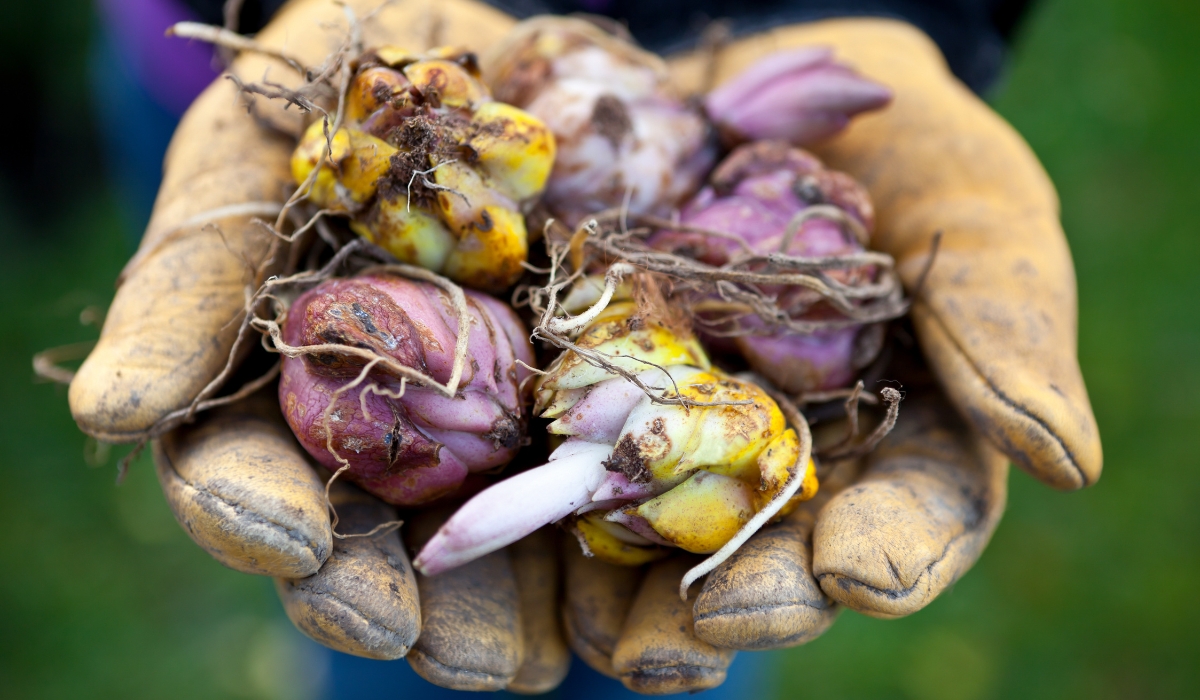
1. Spring-Blooming Bulbs: A Promise of Early Color
- Choose healthy, firm bulbs free of mold or damage.
- Plant at the right depth: Generally, bulbs should be planted two to three times as deep as their height (for example, a 2-inch bulb goes 4–6 inches deep).
- Group bulbs in clusters for a natural, dramatic effect rather than single rows.
- Water thoroughly after planting to settle the soil and encourage rooting.
2. Cool-Season Annuals for Fall and Early Spring Interest
- Plant annuals in well-drained soil amended with compost.
- Water regularly, especially during dry spells.
- Deadhead spent flowers to encourage continuous blooming.
3. Add Texture and Structure with Ornamental Grasses
4. Mulch and Protect New Plantings
5. Plan for Succession
Trust DK Landscaping for Expert Planting
Beat the Heat: Smart Watering Strategies for Your May Landscape
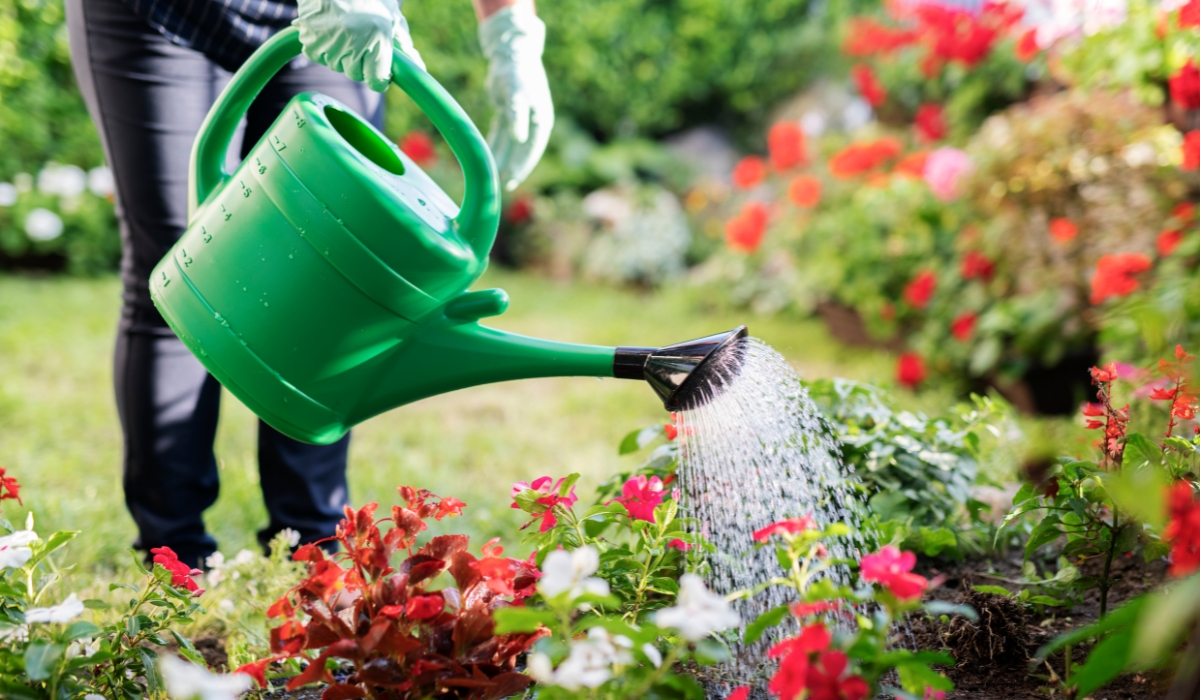
As May arrives in California, so do the steadily rising temperatures. While we all love the sunshine, our gardens start to feel the heat, making smart watering more crucial than ever. At DK Landscaping, we’re committed to helping you maintain a healthy, vibrant landscape while conserving our precious water resources. Here’s how to water smarter, not harder, this May.
The Golden Rule: Water Deeply and Infrequently
Instead of frequent, shallow watering, train your plants to develop deep root systems by watering deeply but less often. This encourages roots to reach further down for moisture, making your plants more resilient to drought and heat stress. For most established trees and shrubs, aim for once a week, or even less for drought-tolerant natives, ensuring the water penetrates at least 18 inches into the soil.
Precision Matters: Embrace Drip Irrigation
If you haven’t already, consider installing or expanding your drip irrigation system. Unlike traditional sprinklers that lose a significant amount of water to evaporation and runoff, drip irrigation delivers water directly to the plant’s root zone, minimizing waste. This targeted approach can improve water use efficiency by 20-50%, fostering healthier plants with deeper root systems. For optimal results, ensure multiple emitters are placed around larger plants to encourage a wider root spread, rather than a single point source.
The Best Time to Water: Timing is Everything
When the sun is high and winds are strong, evaporation rates soar. The best time to water your California landscape in May is in the early morning, ideally between sunset and sunrise, or before 9:00 AM. This allows the water to soak into the soil before the heat of the day causes it to evaporate, and minimizes the risk of fungal issues that can arise from wet foliage overnight in humid conditions. Watering during the middle of the day can lead to a 30% increase in water required due to evaporation.
Harnessing Technology: Smart Controllers
Take the guesswork out of watering with a smart irrigation controller. These innovative devices use local weather data (like temperature, humidity, and rainfall) or even soil moisture sensors to automatically adjust your watering schedule. This means your system will only water when your plants truly need it, preventing overwatering and significant water waste. Many smart controllers are also eligible for local rebates, making them a wise investment for both your wallet and the environment.
Beyond Irrigation: Supplementary Tips
- Mulch, Mulch, Mulch: A 2-3 inch layer of organic mulch around your plants significantly reduces soil moisture evaporation and suppresses weeds that compete for water.
- Group Similar Needs: Place plants with similar water requirements together in “hydrozones” to optimize your irrigation schedule.
- Check for Leaks: Regularly inspect your irrigation system for any leaks or broken sprinkler heads. Even a small leak can waste hundreds of gallons of water.
- Prioritize: If water restrictions are in place, prioritize watering valuable trees and shrubs over annuals or lawns, as they are more difficult and costly to replace.
By implementing these smart watering strategies this May, you’ll not only keep your California landscape looking its best but also contribute to vital water conservation efforts. For personalized advice and professional irrigation solutions, don’t hesitate to reach out to DK Landscaping – we’re here to help your garden flourish responsibly.
Beyond the Bloom: Designing Your Dream Spring Garden with Native California Plants
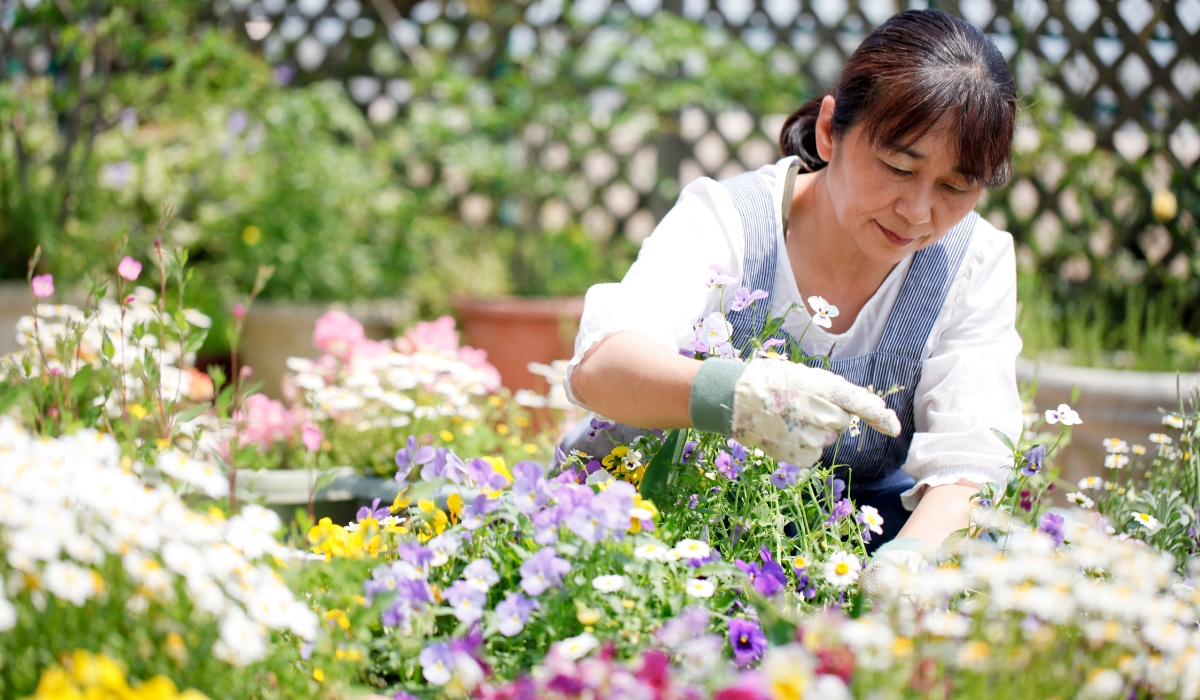
Spring in California isn’t just about fleeting blossoms; it’s an opportunity to create a garden that thrives with minimal fuss and celebrates our unique ecosystem. At DK Landscaping, we champion the beauty and resilience of native California plants. Designing with these incredible species ensures a vibrant spring garden that’s not only stunning but also sustainable and perfectly adapted to our climate.
Why Go Native? The Unbeatable Benefits
Choosing native plants for your spring garden offers a multitude of advantages. First and foremost, they are inherently water-wise. Having evolved in California’s arid to semi-arid conditions, they require significantly less irrigation once established, saving you money and conserving a precious resource. Beyond water savings, native plants are naturally resistant to many local pests and diseases, reducing the need for chemical interventions. They also provide vital habitat and food sources for local wildlife, attracting beneficial insects, butterflies, and birds, bringing your garden to life.
Selecting Your Spring Stars: Beauty and Function
The diversity of California native plants is astounding, offering a palette of textures, colors, and forms for any garden style. For eye-catching spring blooms, consider the brilliant purples of California Lilac (Ceanothus), the sunny yellows of California Poppies (Eschscholzia californica), or the delicate pinks of Coral Bells (Heuchera). For structural interest and year-round greenery, explore Manzanita (Arctostaphylos) varieties with their striking red bark, or the silvery foliage of various sages (Salvia). Don’t forget groundcovers like Creeping Mahonia (Mahonia repens) for shady spots or sedges (Carex) for a grassy effect.
Placement with Purpose: Designing for Success
Thoughtful placement is key when designing with native plants. Mimic natural plant communities by grouping plants with similar water and sun requirements together. “Right plant, right place” is our mantra! Most California natives prefer well-draining soil and full sun, but there are excellent choices for partial shade as well. Consider mature size when planting to avoid overcrowding, and remember that many natives benefit from adequate spacing to promote air circulation. Layering different plant heights and textures will create visual interest and depth, transforming your garden into a dynamic living tapestry.
By embracing the beauty and ecological wisdom of native California plants, you’re not just planting a garden; you’re cultivating a sustainable, low-maintenance, and utterly captivating landscape that celebrates the true spirit of our Golden State. Let DK Landscaping help you design and realize your dream spring garden – one native plant at a time.
Spring into Action: Essential April Tasks for a Thriving California Garden
Spring into Action: Essential April Tasks for a Thriving California Garden
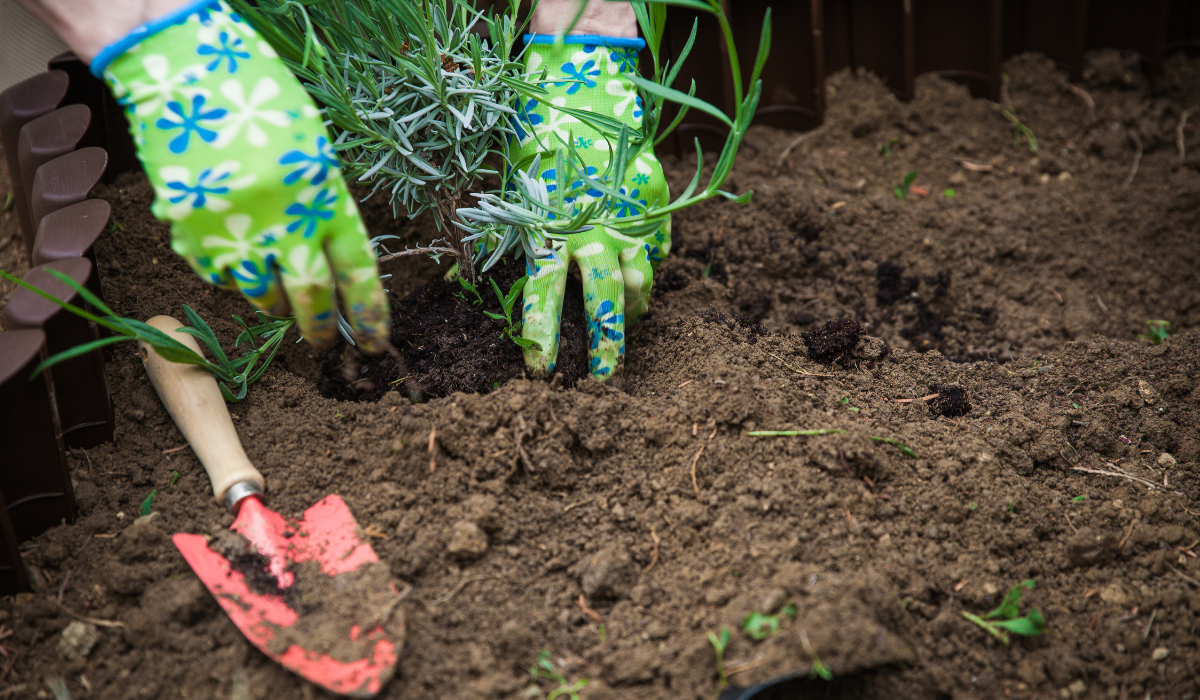
April in California is a symphony of budding life and the perfect time to roll up your sleeves and prepare your garden for a spectacular show. At DK Landscaping, we believe a little proactive effort now can lead to sustained beauty and health throughout the warmer months. Here are our essential April tasks to ensure your California garden thrives:
Nourish for Growth: Fertilizing is Key
After the cooler, wetter months, your soil is ready for a nutrient boost. April is an ideal time to fertilize your plants, trees, and shrubs. For most California native plants and drought-tolerant varieties, a balanced, slow-release granular fertilizer works wonders. Always follow the product’s instructions and consider a soil test to understand specific deficiencies. Healthier soil leads to stronger roots and more vibrant blooms.
Lock in Moisture & Suppress Weeds: The Power of Mulch
Mulching is one of the most beneficial things you can do for your garden in April. A 2-3 inch layer of organic mulch, such as shredded bark, compost, or wood chips, offers numerous advantages. It helps retain crucial soil moisture, reducing your irrigation needs as temperatures rise. Mulch also acts as a natural weed barrier, saving you countless hours of weeding. Furthermore, as organic mulches break down, they enrich your soil, improving its structure and fertility over time.
Embrace the Bloom: Introducing New Spring Plants
April is prime planting season for many annuals and perennials that will flourish in California’s upcoming summer heat. Consider adding drought-tolerant flowers like salvias, coneflowers, and gaillardias for bursts of color that require minimal water. For shady spots, impatiens and begonias can provide a vibrant touch. When selecting new plants, always opt for varieties well-suited to your specific microclimate and soil conditions.
Prepare for the Heat: Setting Up Irrigation Systems
With warmer days on the horizon, now is the time to inspect and optimize your irrigation system. Check for any leaks, clogged emitters, or broken sprinkler heads. Adjust timers to gradually increase watering frequency as temperatures rise, keeping in mind the specific needs of your plants. Consider converting to a drip irrigation system for more efficient water delivery directly to the root zone, especially for established trees and shrubs. A well-maintained irrigation system is crucial for water conservation and plant health.
By dedicating some time this April to fertilizing, mulching, strategic planting, and irrigation preparation, you’ll be setting your California garden up for sustained growth, abundant blooms, and a resilient display that will bring you joy throughout the seasons. If you need assistance with any of these tasks, or for expert advice tailored to your landscape, don’t hesitate to contact DK Landscaping – we’re here to help your garden flourish!
Designing Your Dream Spring Garden: Inspiration from DK Landscaping for March
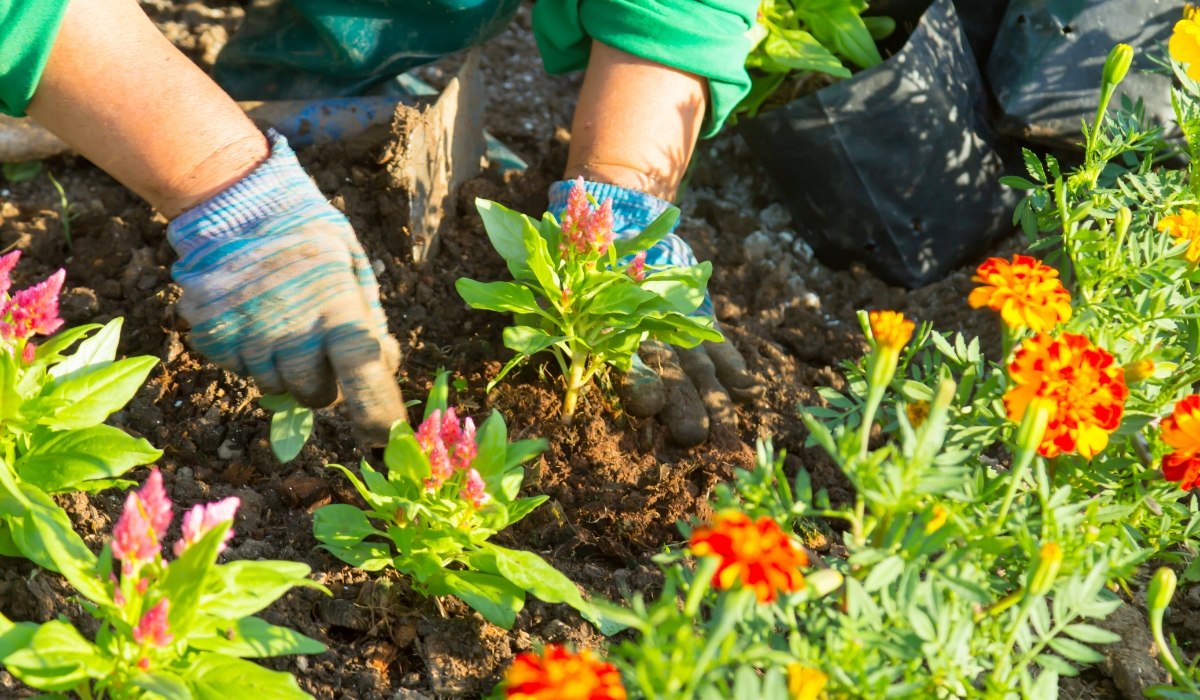
As the landscape awakens in March, it’s the perfect time to not only tend to essential gardening tasks but also to dream and design the spring garden you’ve always envisioned. At DK Landscaping, we believe that thoughtful planning and creative inspiration are key to creating outdoor spaces that bring joy and beauty throughout the season.
This March, let’s explore some inspiring ideas and design considerations to help you craft your dream spring garden, with guidance and inspiration from the experts at DK Landscaping.
Embracing Color and Fragrance:
- Layering Spring Blooms: Create a tapestry of color by layering different spring-blooming plants with varying heights and bloom times. Start with early bloomers like daffodils and tulips, followed by mid-season favorites like irises and peonies, and then late-spring beauties like roses and foxgloves.
- Adding Fragrant Flowers: Engage your senses by incorporating fragrant spring blooms such as lilacs, hyacinths, sweet peas, and stock. Place them near walkways, patios, or windows where their delightful scents can be easily enjoyed.
- Creating Themed Color Palettes: Consider designing specific garden areas with a cohesive color palette. For example, a serene blue and white garden with forget-me-nots, white tulips, and bluebells, or a vibrant warm-toned bed with red poppies, orange calendula, and yellow daffodils.
Designing for Structure and Flow:
- Defining Garden Beds and Borders: Create clear definition between your lawn, pathways, and planting beds using edging materials like stone, brick, or metal. This adds a sense of order and visual appeal to your garden.
- Incorporating Vertical Elements: Add height and visual interest by incorporating vertical elements such as climbing roses on trellises, clematis vines on arbors, or tall flowering spires like delphiniums and snapdragons.
- Creating Pathways and Focal Points: Design inviting pathways that encourage exploration of your garden. Create focal points with striking plants, unique sculptures, or charming water features to draw the eye and add personality.
Considering Functionality and Enjoyment:
- Designing Outdoor Living Spaces: Extend your living space outdoors by creating comfortable seating areas, dining nooks, or even an outdoor kitchen. Consider the placement of these areas in relation to sunlight, shade, and prevailing winds.
- Attracting Pollinators: Design your garden with pollinators in mind by including a variety of nectar-rich flowers that attract bees, butterflies, and hummingbirds. Include native plants whenever possible.
- Creating a Cutting Garden: If you enjoy bringing fresh flowers indoors, dedicate a section of your garden to growing cut flowers like zinnias, cosmos, sunflowers, and dahlias.
Getting Started with Your Spring Garden Design:
- Assess Your Existing Space: Take a good look at your current garden, noting sunlight patterns, soil conditions, and existing plants.
- Gather Inspiration: Browse gardening books, magazines, websites, and social media platforms for ideas and inspiration that resonate with your style and local climate.
- Sketch Your Ideas: Create a rough sketch of your desired garden layout, noting the placement of different plants and features.
- Consult with the Experts: If you need help bringing your spring garden vision to life, the design team at DK Landscaping is here to provide expert advice and create a customized plan for your outdoor space.
Let DK Landscaping help you design and cultivate the spring garden of your dreams this March!
Contact us today for a consultation and let’s bring your vision to full bloom.
Spring Awakening: Essential March Gardening Tasks with DK Landscaping
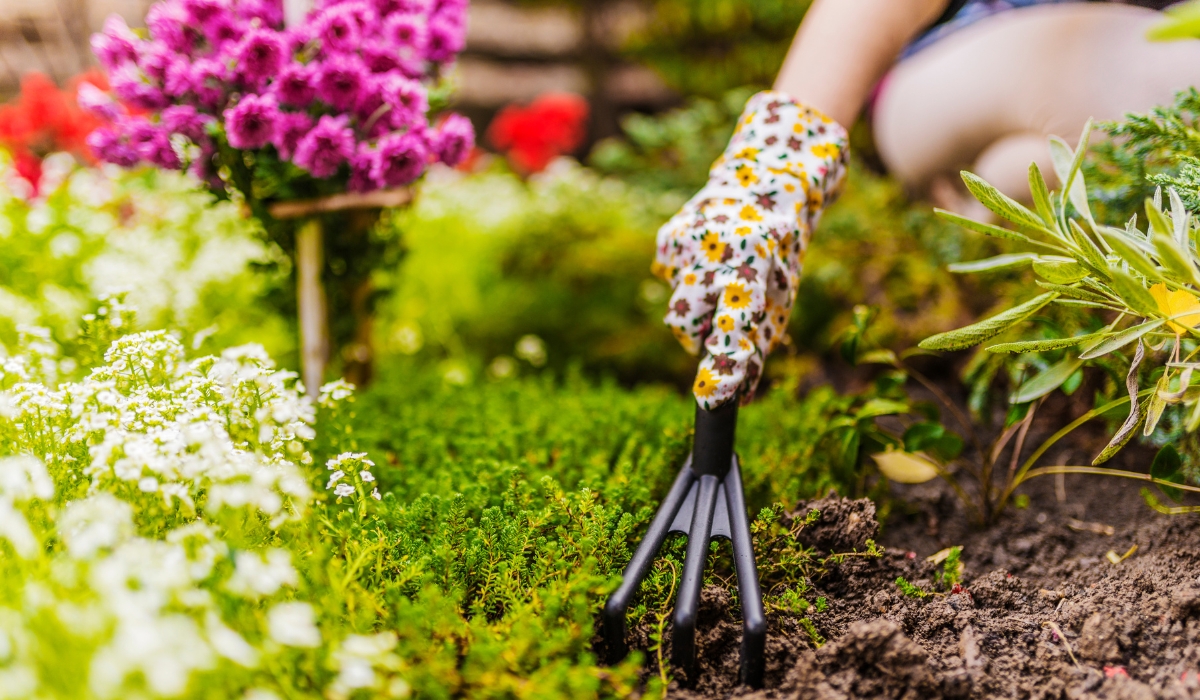
Ah, March! The air is alive with the promise of new beginnings, the days are noticeably longer, and a vibrant energy returns to our California landscapes. At DK Landscaping, we eagerly anticipate this time of year, as it marks the true awakening of our gardens.
March is a bustling month for gardeners, filled with exciting opportunities to nurture new growth, plant for the season ahead, and revitalize our outdoor spaces after the quieter winter months. Let’s dive into some essential March gardening tasks to ensure your landscape flourishes this spring and beyond, courtesy of your friends at DK Landscaping.
Embracing the Burst of New Growth:
- Fertilizing for Spring Vigor: As plants emerge from dormancy and begin their active growth cycle, they benefit from a boost of nutrients. Apply a balanced, slow-release fertilizer to your lawns, trees, shrubs, and flower beds. Follow the product instructions carefully.
- Spring Pruning (Selective): Now that spring-flowering shrubs like azaleas, rhododendrons, and lilacs have finished their bloom (or are just finishing), it’s the ideal time to prune them. Prune to shape, remove dead or crossing branches, and encourage bushier growth for next year’s floral display. Avoid heavy pruning now, as you could remove developing flower buds.
- Dividing Perennials: Many perennials that have become overcrowded can be divided in early spring. This rejuvenates the plants, encourages more blooms, and allows you to expand your garden or share with friends. Look for plants with multiple crowns that can be easily separated.
Planting for a Colorful Season:
- Planting Warm-Season Vegetables: With the soil warming up, March is the perfect time to start planting many of your favorite warm-season vegetables, such as tomatoes, peppers, eggplants, zucchini, and cucumbers. Be sure to check your local frost dates and protect young plants if unexpected cold snaps occur.
- Direct Sowing Annual Flower Seeds: Sow seeds directly into your garden beds for a continuous display of colorful annual flowers like zinnias, cosmos, marigolds, and sunflowers. Choose varieties that thrive in your local climate and soil conditions.
- Planting Summer-Blooming Bulbs & Tubers: Get a head start on summer beauty by planting bulbs and tubers like gladiolus, dahlias, lilies, and cannas in March.
Lawn Care for a Lush Carpet:
- Lawn Aeration: If your lawn experienced heavy foot traffic or the soil feels compacted, consider aerating it in early March. Aeration improves air circulation, water penetration, and nutrient uptake, leading to a healthier and greener lawn.
- First Mowing & Edging: As your lawn begins to actively grow, it’s time for the first mowing of the season. Set your mower blades to a higher setting for the initial cut and maintain a consistent mowing schedule. Don’t forget to edge along walkways and garden beds for a crisp, clean look.
- Weed Control & Overseeding (if needed): Address any winter weeds that have emerged in your lawn. If your lawn is thin or patchy, early March is a good time to overseed with a suitable grass seed variety.
Ongoing Garden Maintenance:
- Continue Weed Control: Stay vigilant with weed control throughout March. Young weeds are easier to remove than established ones.
- Monitor for Pests & Diseases: As new growth emerges, keep an eye out for any signs of early pest infestations or diseases. Addressing problems promptly can prevent them from spreading.
- Watering as Needed: While spring rains are common, monitor soil moisture levels and water deeply when necessary, especially for newly planted items.
Embrace the Energy of Spring with DK Landscaping:
March is an exciting time to be a gardener in California, and DK Landscaping is here to help you make the most of this vibrant season. Whether you need assistance with spring planting, pruning, lawn care, or designing a stunning spring landscape, our experienced team is ready to bring your vision to life.
Contact DK Landscaping today to discuss your March gardening needs and let us help your garden thrive!
Love Your Landscape: Enhancing Beauty and Function in February with DK Landscaping
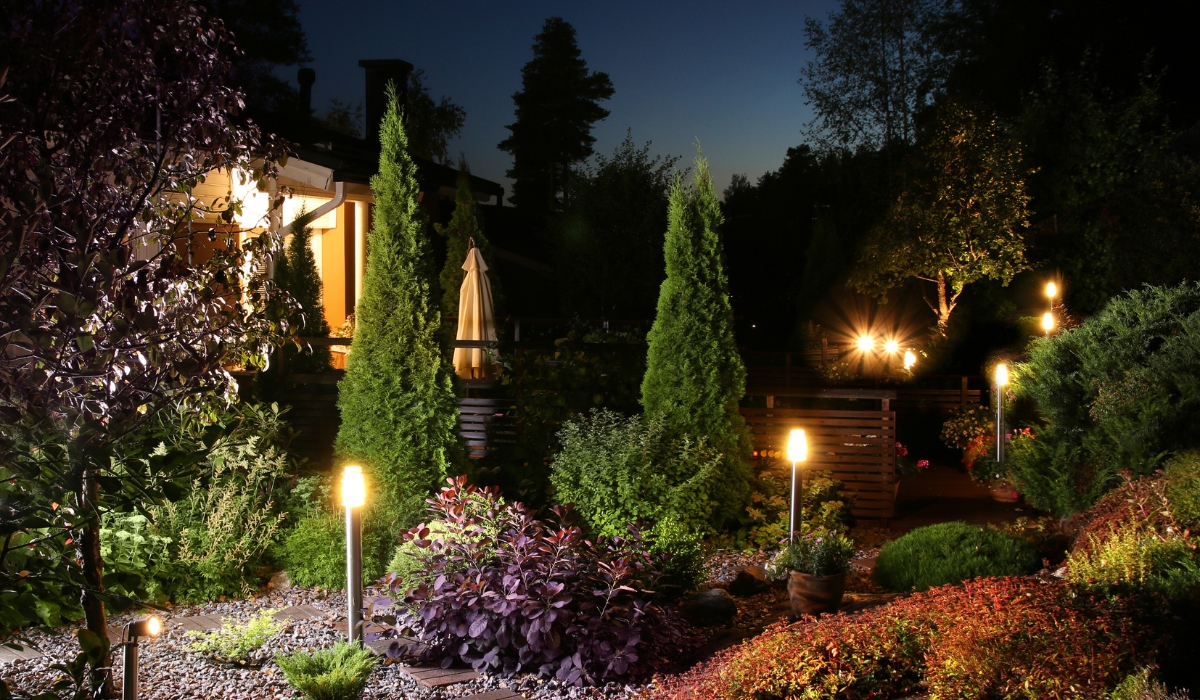
February, often associated with romance, is also a wonderful time to show some love to your landscape. Beyond the essential gardening tasks, this month provides an opportunity to focus on enhancing both the beauty and functionality of your outdoor spaces. At DK Landscaping, we believe a well-loved landscape contributes to your enjoyment and the overall value of your home.
Let’s explore some ways to show your landscape some extra attention this February, creating spaces you’ll adore in the seasons to come.
Adding Elements of Beauty and Ambiance:
- Consider Adding Hardscape Features: February’s milder weather can be a good time to plan and even begin smaller hardscape projects like adding a charming pathway, a decorative patio extension, or a cozy fire pit area. These features enhance the usability and visual appeal of your outdoor spaces.
- Install Outdoor Lighting: As the evenings remain a bit longer, consider adding or upgrading your outdoor lighting. Well-placed lights not only improve safety and security but also create a warm and inviting ambiance for evening enjoyment. Highlight architectural features, pathways, or favorite plants with strategically placed fixtures.
- Introduce Water Features: The gentle sound of flowing water can add a sense of tranquility and beauty to your garden. Consider installing a small fountain, a bird bath, or even a more elaborate water feature to create a focal point and attract beneficial wildlife.
- Enhance Seating Areas: Think about creating comfortable and inviting seating areas where you can relax and enjoy your garden. Add a new bench, a set of outdoor chairs, or even a hammock. Consider the views and the sun/shade patterns when choosing locations.
Focusing on Functionality and Sustainability:
- Improve Drainage: If you’ve noticed areas in your garden that tend to stay waterlogged, February is a good time to address drainage issues. Consider installing French drains or amending the soil to improve drainage and prevent root rot.
- Build or Expand Raised Beds: Raised garden beds offer numerous benefits, including improved drainage, easier access for planting and harvesting, and better soil control. February is a great time to build or expand your raised bed areas in preparation for spring planting.
- Install or Upgrade Irrigation Systems: Ensure your irrigation system is functioning efficiently. February provides an opportunity to inspect sprinkler heads, repair leaks, and adjust watering schedules in anticipation of the drier months ahead. Consider upgrading to a more water-efficient system like drip irrigation.
- Create Wildlife Habitats: Show your love for nature by creating habitats that attract beneficial insects, birds, and pollinators. Consider adding bird feeders, bird baths, and planting native flowers that provide food and shelter.
Showing Your Plants Some Love:
- Top Dress Planting Beds: Refresh your planting beds with a layer of compost or well-rotted manure. This provides a slow-release of nutrients and improves soil health.
- Mulch Thoughtfully: Ensure your plants have an adequate layer of mulch to help retain moisture, suppress weeds, and protect roots from temperature fluctuations.
- Inspect Plant Supports: Check the supports for climbing plants and make any necessary repairs or adjustments before vigorous spring growth begins.
At DK Landscaping, we’re passionate about creating outdoor spaces that you’ll truly love. Let us help you enhance the beauty and functionality of your landscape this February and beyond.
Contact DK Landscaping today to discuss your landscape enhancement projects!
The Principles of Xeriscaping on Your Property
Living in a hot and dry area or one that does not have much rainfall does not mean that you cannot have the exceptional landscapes typical in places with a lot of rain. Furthermore, you need not waste the average 90 gallons of water watering the plants for a thriving lawn or landscape. There is one option for having a flourishing lawn in an eco-friendly manner, even in dry regions. The solution lies in xeriscaping.
Xeriscaping denotes a landscaping design method based on water conservation. Though often meant for property owners in semi-arid and arid places, the design can also be used in areas with a lot of rain to conserve water. The concept in xeriscaping is conserving water through the correct landscaping principles.
Below are the guiding principles of xeriscaping.

Limited Turf Area and Use a Suitable Grass Variety
Grass is beneficial in landscaping because it controls erosion and water infiltration into the soil. However, a large turf section is one of the biggest causes of wasted water for landscaping. You should try to have grass only in the sections where kids and pets will need it or, in commercial spaces, only in regions that can accommodate many people.
It is best to limit the grass in your landscape to the flat and shaded areas of your property. This minimizes the risk of runoff and evaporation. You should also pick the grass varieties that have deeper roots, since they retain moisture better than those with shallow roots. Some of the best varieties for xeriscaping include Blue Grama, California Oatgrass, Blue Fescue, Bermuda, Buffalo, and St. Augustine.
Improved Soils
Consider using organic soil enhancements like manure, wood chips, peat moss, or grass clippings to improve your landscaping soil. These will support the growth of plants with broad root systems, allow natural aeration, and increase the soil’s water retention capacity.
There are also commercial inorganic soil amendments, but these are more expensive than their organic counterparts. However, they will still benefit your lawn if you, for whichever reason, cannot get organic enhancements. Before any soil improvements, the soil is tested to know its elements that need increasing and the best options for it.
Addition of a Water-retaining Mulch
Mulch will form a protective layer between the air and your plants’ roots, thus encouraging water retention. The best options for this are pine needles and shredded hardwood. Water retention not only improves plant health but will also minimize the evaporation rate and thus reduce the frequency of watering plants. In hot, dry climatic regions, steer clear of rocks and mulch types that radiate or retain heat. These only burn your plants.
Inclusion of a Rain Garden in Runoff Sections
Rain gardens are ideal options for cleaning and capturing groundwater in the low-lying sections of your property. Though dry in most instances, they will hold a generous amount of water after it rains. You can include perennials, flowers, and native shrubs around the rain garden to create a beautiful landscape bed. You can also settle for cisterns, porous paving, and rain barrels to capture runoff that can be recycled to water your landscape.
The Use of Drought-resistant and Native Plants
Drought-resistant and native plant species will often consume less water than exotic species. You can find a broad range of drought-resistant landscaping plants at your local nursery to match your envisioned design. To ensure you get the suitable plant varieties, research the distribution and amount of rainfall in your area beforehand.
Pick plants based on their expected sizes when mature rather than the size in which you buy them. Moreover, pick a few trees to maximize the shade in your landscape for the plants. This shade reduces evaporation, and the trees will act as windbreakers that protect your fragile plants.
An Effective Irrigation Method
Soaker hoses or drip irrigation is the ideal irrigation option in xeriscaping. This comprises a network of pipes with tiny holes that deliver water to the plants’ roots to minimize evaporation and water wastage. Overhead irrigation or using a watering cane leads to less water delivered to your plant roots and wastes a lot of water.
Furthermore, consider watering your plants in the morning because the water will evaporate slowly in cool conditions at this time. Watering plants in the morning also allows them to dry as the day progresses. This reduces the risk of your plants contracting fungal diseases that usually affect humid or constantly wet plants.
If you want to start conserving water in your landscaping design, do not assume that this is as easy as sticking to the xeriscaping principles above. There are different elements like making the right choice of mulch in relation to your soil, climate, and plants. To save time and guarantee the best results, hire skilled landscapers from DKlandscaping to handle your xeriscaping.
Tips for the Best Sprinkler System Design
Your sprinkler system is essential for keeping your yard lush and healthy. When you invest in the best sprinkler system, you reduce your water usage and the time you spend tending your lawn. Here are some tips for the best sprinkler system layout for a hassle-free, flourishing yard.

Determine the Size of Your Yard
Knowing the size of your yard is the first step in designing your sprinkler system. The yard size determines the size of your sprinkler system, the number and types of pipes, valves, manifolds, controllers, and the number of nozzles to use. When measuring your lawn, include the driveway, walkways, outdoor sheds, and your house.
Measure the Water Pressure
Your local water authority can give you a report on your property’s water pressure. But since the pressure may vary from one point across your yard to the other, measure the water pressure and gallon per minute from different locations. Hook a water gauge to an outdoor spigot, and then turn it on fully to detect the water pressure.
Measure the gallons per minute( GPM) water flow in your property by placing a gallon under a tap and recording the time it takes to fill up with water when you turn on the tap to full blast. The water pressure and GMP determine if there will be sufficient water flow in your sprinkler system to irrigate your yard.
If the pressure is low, you may need to operate sections of the sprinkler system separately. This is not a problem since the sprinkler sections serve areas with different watering needs.
Determine Your Hydrozones
Different parts of your property have varied watering requirements based on the soil type, type of plants, and shade covering. Shady areas require less watering than the areas that receive sunlight all day.
Besides, native plants may need less water, the same way clay soil needs less water than sandy soil since it holds water better. These hydro zones will help you set different watering frequencies on your sprinkler system.
Draw Your Sprinkler System Layout
Determine the layout of your piping, nozzle heads, valves, and irrigation controller. Draw your sprinkler system design on graph paper to a scale to ensure your measurements are accurate. This will tell you the number and size of fitting you require.
Select Your Sprinkler Heads
Pick sprinkler heads from the same brand since each brand designs sprinkler heads differently. You may need different sprinkler head designs to suit your hydro zones. Here are sprinkler head designs to consider:
- Spray Heads with Rotary Nozzles
They are ideal when spraying a large area. They can consistently sprinkle water to a radius of about 13-30 feet.
- Rotors
Fix the same size of rotors in each hydro zone for consistency. The rotor head size will depend on the area and radius you want it to reach. They can deliver water to 15 feet to 50 feet radius.
- Fixed Spray
Fixed sprays reach a radius of about 6 to 18 feet, with each sprayer delivering water to the same area consistently. Arrange your fixed sprayers to ensure a subsequent sprayer begins where its predecessor ends.
- Specialty Patterns and Bubblers
These sprayers deliver water to special landscapes areas such as lawn end strips, shrubs, and trees. They can throw water as high as 15 feet and up to 5 feet radius.
- Drip Irrigation
This sprinkler system consists of many small emitters that deliver water directly to a plant. They are laid on the ground in landscape beds and ground covers.
Acquire Your Sprinkler System Parts
Buy your sprinkler system parts from the same brand to ensure they integrate well. Ensure you pick the correct sizes and types for each hydro zone. You will need pipes, nozzle heads, manifolds, irrigation controllers, and valves.
Layout Your Sprinkler System
Follow your design sketch to lay out and join the sprinkler parts for each hydro zone. You can use common valves for small nozzle heads. You can also connect several valves to one controller.
Test and Adjust
Once you have assembled your sprinkler system, test if the sprinkler system layout works as expected. Note any anomalies and rectify them.
Test if the sprinkler system delivers water concurrently to all the parts of your yard or there are parts where the water pressure is insufficient. Some parts of the sprinkler may deliver water well when operated individually if they are affected by low water pressure and GPM.
Set your controllers appropriately to meet the watering frequency needs for each hydro zone. To get the best out of your sprinkler system layout, work with lawn experts with experience in designing, laying out, and maintaining sprinkler systems.
Are you looking for a reliable landscape maintenance company to help you with your sprinkler system design? Reach out to us. We will test your water pressure and GPM to determine the best sprinkler system parts and layout.
We will also help you identify your hydro zones for the best sprinkler system layout. Contact us today to discuss your landscape maintenance project.
The Right Fertilizer and Landscape Maintenance for Your Unique Property
Every property needs landscape maintenance tailored to its unique idiosyncrasies. Though few know it, the winter fertilizer placed on your lawn makes a major difference in its look and quality. The degree of proper landscaping maintenance applied to your property matters a great deal. Instead of attempting to figure out all the nuances of lawn and landscaping management on your own, let our team do the work for you.
The Optimal Fertilizer for Your Lawn

There is a common misconception that any old fertilizer will suffice for a lawn. This is precisely why we closely evaluate local lawns to determine which fertilizer is best. Though you won’t notice results right away after we apply our specialized winter fertilizer, it will provide your lawn with all sorts of benefits.
Our special fertilizer for wintertime treatments bolsters grass so it doesn’t need nearly as much water. Our fertilizer stimulates root development and also boosts resistance to disease as well as traffic. Place your trust in our team to fertilizer your lawn and provide landscape maintenance and you will rest easy knowing the best in the business are hard at work on your property. We have provided service throughout Sonoma County for more than a decade. We have all the expertise, manpower and equipment necessary to manage your landscape during the challenging winter and also year-round. Let our team do all of the work and you will be liberated to sit back, relax and enjoy the beauty of your property.
We Sweat the Small Stuff so You Don’t Have To
Our team provides a lawn fertilization management program so you don’t have to lift a finger to ensure your lawn is properly fertilized and maintained throughout the entirety of the year. This is your opportunity to kick back and relax while our team handles all the aspects of landscape maintenance on your behalf. We add lawn fertilizer once every two months. Our team applies truly elite fertilizers optimal for the specific season. In fact, we even add slow-release fertilizer in the summer and spring months to bring out the best in your lawn.
The Best Lawn Maintenance Management Program in Town
While many other landscape maintenance companies do the bare minimum, we take the opposite approach. We have gone to great lengths to ensure our standard maintenance program covers all aspects of lawn maintenance management. There are absolutely no hidden fees when you lean on our team for landscape maintenance. We do all of the work so you can enjoy the beauty of your landscaping. Our services extend to both local homes and local businesses. Take advantage of our maintenance management program and you will be treated to mowing, lawn edging, blow yard services, leaf/litter cleanup and our lawn fertilization management program as detailed above.
We really do go to the extent of adding fertilizers to your lawn that are optimal for each unique season. In fact, our team even controls and manages weeds on your lawn so it looks its best throughout the entirety of the year. Whether you are looking for your plants to be trimmed/pruned, herbicide to bet added to weeds, fresh batteries to be added to your timers or your irrigation to be checked by QWEL-certified personnel, our team gets the job done to perfection on the first try without exception.
Reach out to us Today to Schedule Service
If you own a home, a business or any other property, contact our team today to schedule landscape maintenance and additional services. You can reach our landscaping experts by dialing (707) 280-3632 or by emailing Kathyx159@aol.com.





